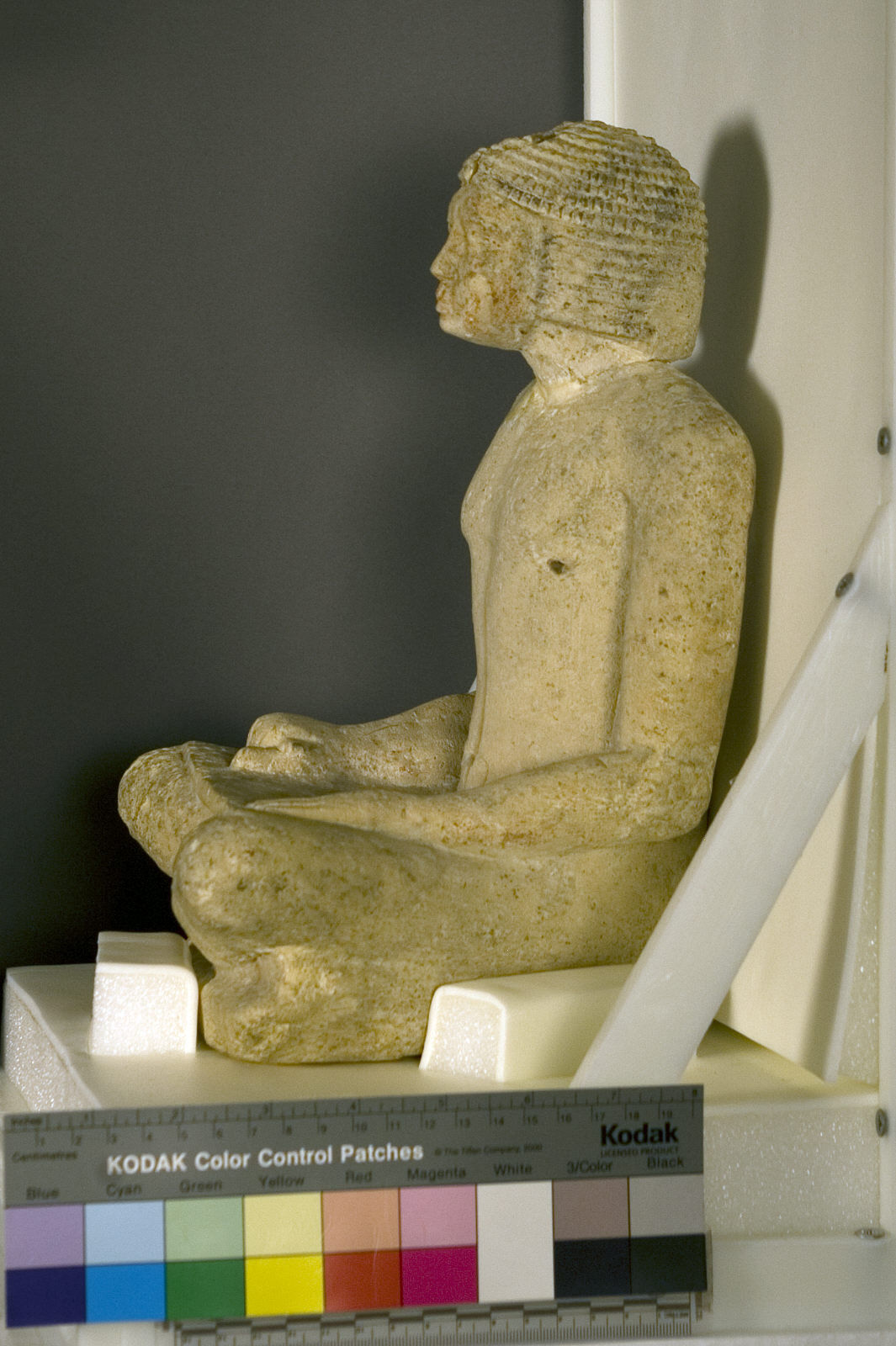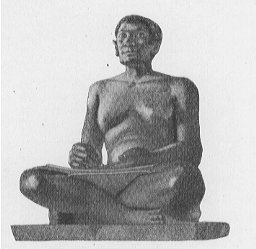

His life is monotonous, but he consoles himself by writing essays on the hardships of the manual worker’s existence, and the princely dignity of those whose food is paper and whose blood is ink. He is sedulously attentive and mechanically industrious he has just enough intelligence not to be dangerous.

“Every visitor to the Louvre has seen the statue of the Egyptian scribe, squatting on his haunches, almost completely nude… He keeps record of work done and goods paid, of prices and costs, of profits and loss he counts the cattle as they move to the slaughter, or corn as it is measured out in sale he draws up contracts and wills, and makes out his master’s income-tax verily there is nothing new under the sun. Come and see for yourself: if you keep your eye on him as you walk around the display case, you’ll get a sense that he’s watching you too! His eyes are inlaid with rock crystal and seem to sparkle with life. My God, he seems to be alive the head of the Egyptian Antiquities Service. It was discovered under mysterious circumstances by Auguste Mariette in 1850. This small, realistic limestone statue is over 4,000 years old and depicts an Egyptian scribe about to write on a sheet of papyrus. This restoration brought out the well-conserved ancient polychromy.The Scribe’s fame is due in great part to his compelling gaze. The Seated Egyptian Scribe from the Louvre Museum. The statue was cleaned in 1998, although the process merely reduced the wax overpainting. The hands, fingers, and fingernails are sculpted with a remarkable delicacy. His chest is broad and the nipples are marked by two wooden dowels. A line of black paint defines the eyebrows. The entire eye was then held in the socket by two large copper clips welded on the back. The back side was covered with a layer of organic material, creating the color of the iris and also probably serving as an adhesive. The front part of the crystal was carefully polished.

The most striking aspect of this sculpture is the face, particularly the elaborately inlaid eyes: they consist of a piece of red-veined white magnesite, in which a piece of slightly truncated rock crystal was placed. His right hand must have held a brush, now missing. fourth Dynasty, Old Kingdom, painted limestone with rock crystal, magnesite, and copper/arsenic. The link to this video is provided at the bottom of this page. The intricate details on its face and clothing. While on the other hand, the piece Seated Scribe shows a man. One of these differences is simple Khafre, the Pharaoh that is being depicted in the piece, Khafre has the body build, such as muscles, that would give the viewer the idea that he is a leader.

He is holding a partially rolled papyrus scroll in his left hand. Steven Zucker provide a description, historical perspective, and analysis of The Seated Scribe. The statue depicts a figure sitting in an attentive posture, holding a papyrus scroll or writing utensil. The piece Khafre has many differences compared to Seated Scribe. The white kilt, stretched over his knees, serves as a support. The Louvre's scribe, known as the "Seated Scribe", is indeed sitting cross-legged, his right leg crossed in front of his left. Painted limestone, eyes inlaid with alabaster, quartz cornea and rock crystal iris set in copper, 4th of 5th dynasty of Egypt, 2600–2350 BC.


 0 kommentar(er)
0 kommentar(er)
